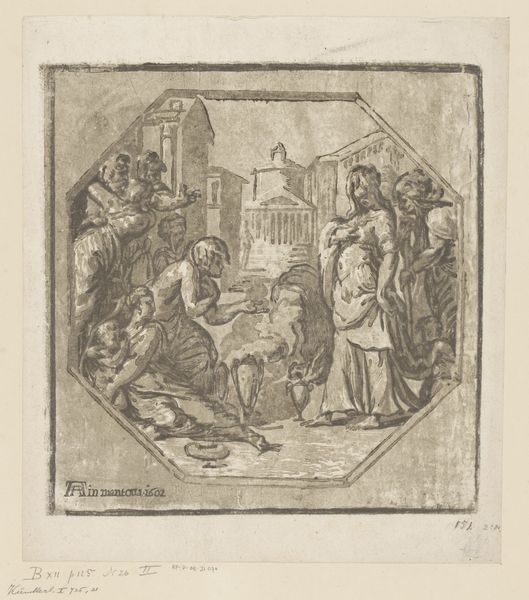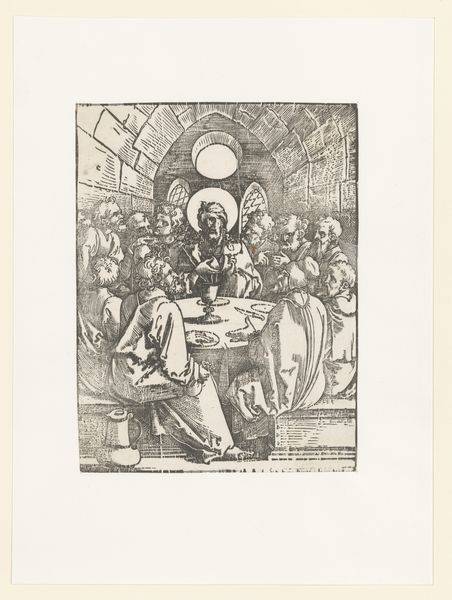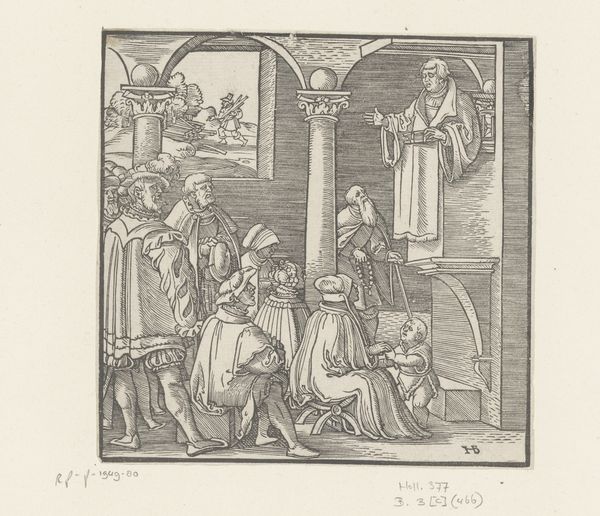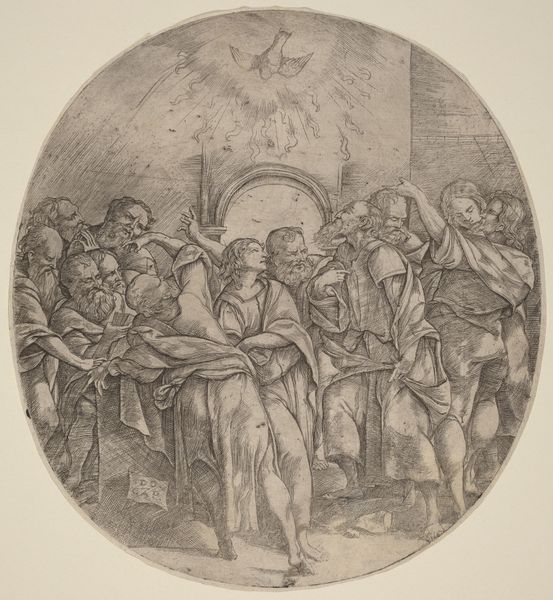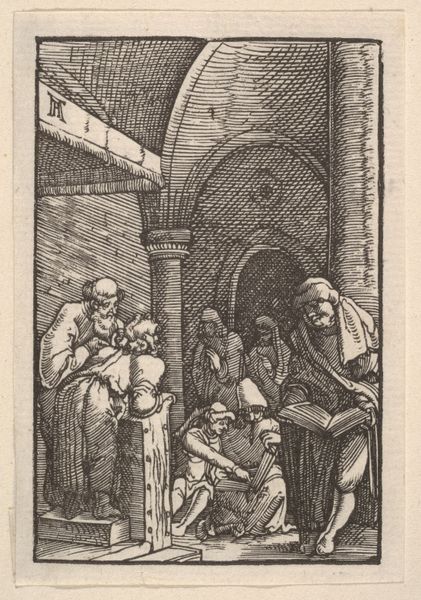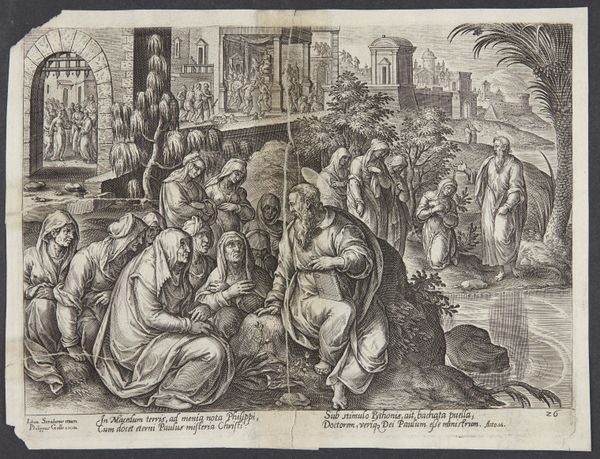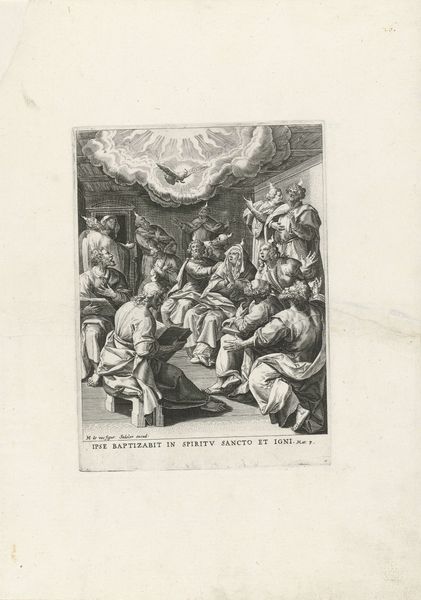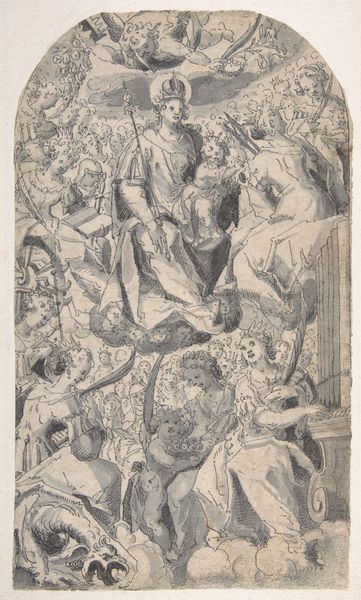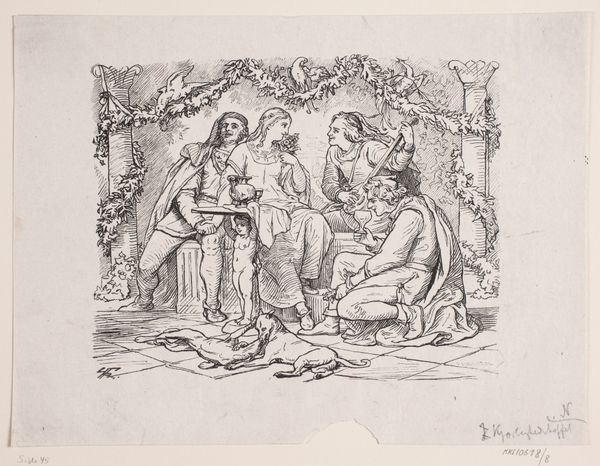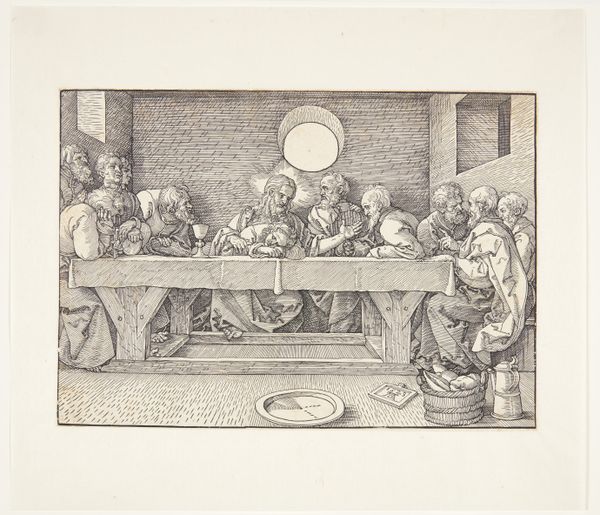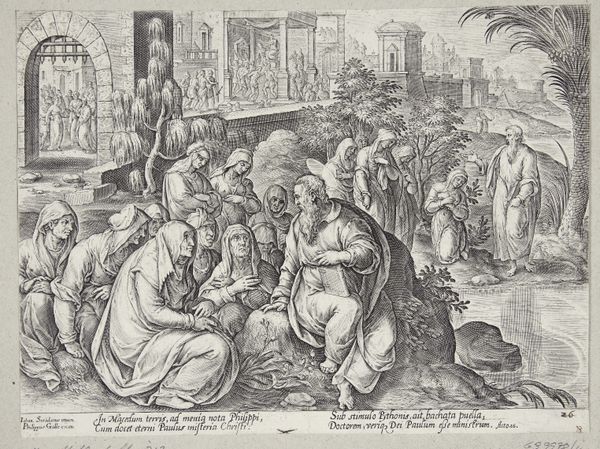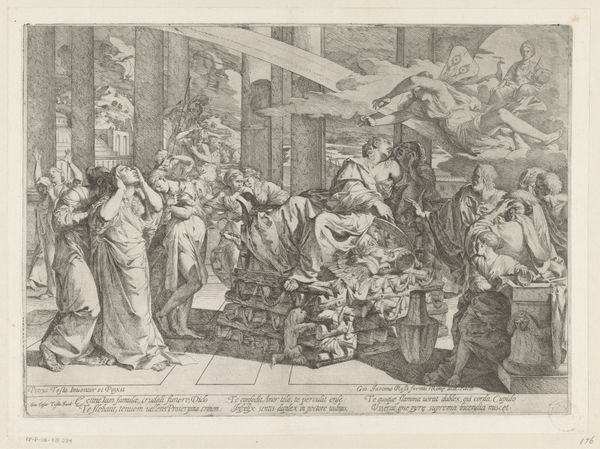
print, woodcut
#
pen drawing
# print
#
pen illustration
#
pen sketch
#
ink line art
#
personal sketchbook
#
sketchwork
#
pen-ink sketch
#
woodcut
#
china
#
pen work
#
sketchbook drawing
#
sketchbook art
Dimensions: 6 1/16 x 5 5/8 in. (15.4 x 14.29 cm) (image)
Copyright: Public Domain
Editor: This is "The Risen Christ Appears to His Disciples," made in 1637, currently housed in the Minneapolis Institute of Art. The medium appears to be woodcut and pen drawing. I'm struck by the artist's commitment to capturing detail and the intriguing fusion of Western religious themes with what seem to be Chinese cultural elements. What's your perspective on this work? Curator: This piece compels us to consider the intersection of production and cultural exchange. Notice the deliberate use of the woodcut medium, a technology readily available and relatively inexpensive, which democratized image production at the time. The integration of Chinese characters and stylistic elements points to the consumption of visual culture crossing geographic boundaries. Who do you think had access to prints like these? Editor: That’s interesting. So, the print itself becomes a commodity, a tangible record of cultural encounter available for consumption across different social classes. The imagery must have traveled! Who was this made for? Curator: Precisely. Let's consider the function of devotional imagery in society. Woodcuts like this made religious narratives accessible to a wider audience, essentially commodifying spirituality through mass production. Consider how this mass distribution might impact both the reception of these images and the skills and labor needed to produce these. Editor: So, you’re suggesting this piece invites us to consider the material means through which faith and art were disseminated and consumed within society. Curator: Exactly. Also note the details like the paper and the ink, each carries their own cultural histories, wouldn't you agree? The method of printmaking becomes crucial to understanding its context. What do you make of the relationship between content and the production? Editor: It shifts my view on what "religious" art can mean. Seeing how it was made, makes me consider religion and the consumption of imagery as part of material culture! Thank you! Curator: Indeed! Recognizing art as enmeshed in social production processes helps unveil art's deeper function as a nexus for labor, trade, and even faith itself.
Comments
minneapolisinstituteofart over 1 year ago
⋮
Giulio Aleni, an Italian-born Jesuit, lived in China for nearly four decades, arriving in 1613 and remaining there until his death in 1649. Mastering the Chinese language, Aleni wrote a number of religious and scientific treatises in China and founded several Christian missions there. These prints come from a book Aleni published in the Fujian Province to help in his conversion efforts.
Join the conversation
Join millions of artists and users on Artera today and experience the ultimate creative platform.
